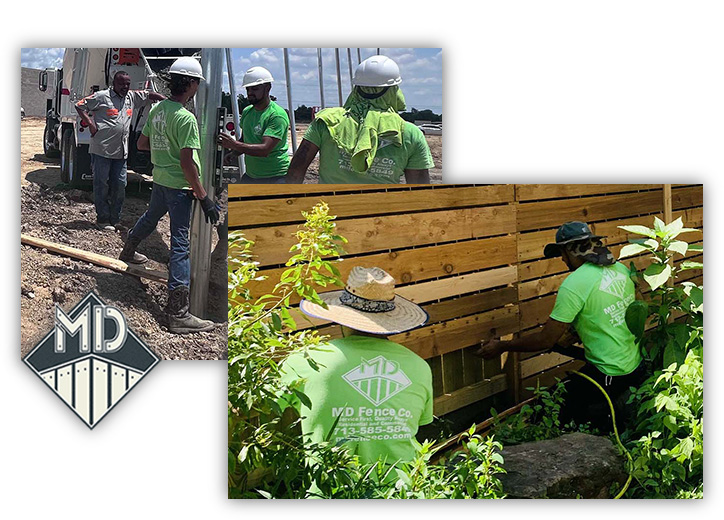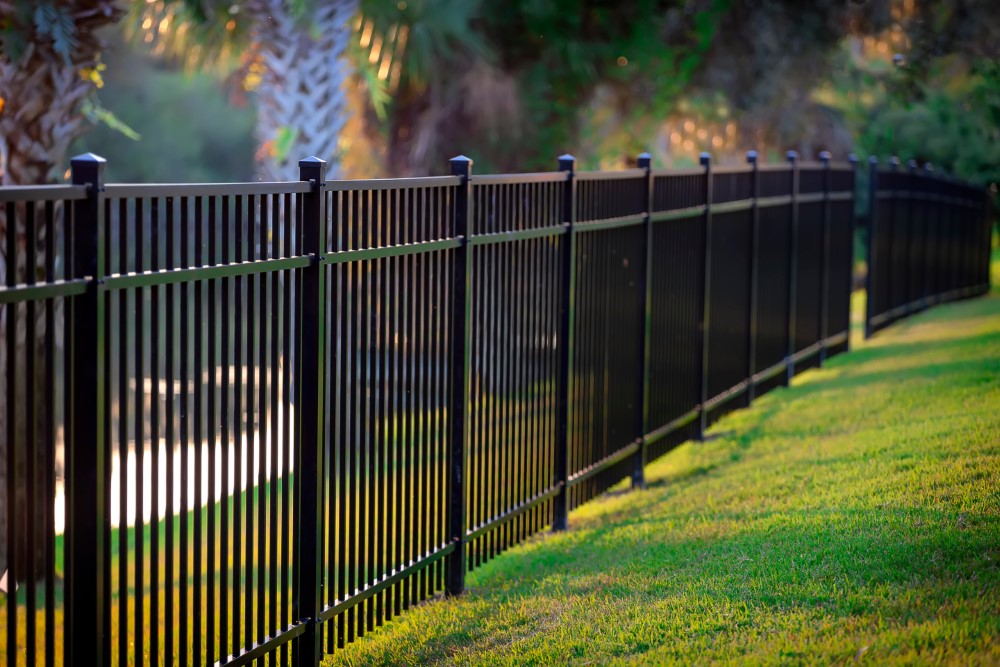Why a Licensed Fence Contractor Is Worth the Investment
Why a Licensed Fence Contractor Is Worth the Investment
Blog Article
Just How to Recognize Typical Problems That Need Immediate Fencing Fixing
It is crucial to spot concerns before they come to be bigger issues when it comes to keeping your fence. Frequently looking for indications of decaying timber, leaning panels, or corrosion can save you money and time over time. You might not recognize exactly how weather and parasites can jeopardize your fencing's stability. Allow's explore the typical signs that suggest your fence needs prompt attention, so you can keep your property safe and secure and looking its best.
Signs of Rotting Wood in Wooden Fences
Have you discovered your wooden fencing looking a little bit shabby? It might be time to examine for indicators of rotting timber if so. Check out the base of the articles and panels for soft places. If you push on the wood and it really feels spongy or falls apart, that's a clear indicator of rot. Next off, try to find staining or dark places on the timber-- these typically signal dampness damage. Focus on any type of peeling paint or coating, as this can subject the timber to further decay. Furthermore, a pungent, mildewy odor can show fungal development. Do not forget to examine joints and connections; if they're loose or crumbling, the timber under is likely jeopardized. By catching these indicators early, you can protect against a lot more comprehensive damages and keep your fence standing strong. Normal upkeep is vital to expanding the life of your wood fence.
Leaning or Tilting Fencing Panels
It's important to understand what created it if you've noticed your fencing panels tilting or leaning. This concern might indicate underlying architectural damages that requires your focus. Let's explore the typical reasons and the repair work alternatives offered to get your fencing back fit.

Sources Of Leaning Panels
It's often an indicator of underlying problems that require resolving when you notice your fencing panels tilting or leaning. One usual reason is insufficient water drainage; extreme water can erode the soil around the fence posts, compromising their support. Another culprit might be strong winds or storms that push versus the panels, particularly if they're not effectively anchored. Furthermore, the all-natural settling of dirt in time can trigger posts to move, bring about a tilt. Bugs, like termites, can compromise the honesty of wooden panels, triggering them to lean. Inadequate installation methods might result in panels not being firmly set, leaving them vulnerable to leaning under stress. Address these concerns quickly to preserve your fence's integrity.
Indications of Architectural Damage
Noticing turning or leaning fencing panels can be startling, as these issues often suggest structural damage that requires prompt interest. When your fence begins to lean, it may signify that the blog posts are changing or that the soil around them has actually eroded. Pay attention to voids in between panels or posts, as these can additionally suggest instability. deck builder. In addition, check for fractures or splintering in the wood, which can weaken the overall structure. If you notice corrosion or deterioration on steel elements, it might endanger the honesty of the fencing. Keep in mind, overlooking these indicators can result in extra serious damage down the line, so it's important to examine the scenario without delay and do something about it before it intensifies
Fixing Options Available

Corrosion and Deterioration in Metal Fences
If you have a metal fence, you might discover rust and corrosion creeping in gradually, specifically if it's exposed to dampness. These concerns not only influence the appearance of your fencing yet can likewise endanger its architectural honesty. To recognize corrosion, try to find reddish-brown areas or patches, which show the steel is oxidizing. Rust can spread out rapidly if left without treatment, leading and weakening the fence to pricey repairs.To tackle corrosion and corrosion, you must clean up the influenced locations with a cable brush and apply a rust-inhibiting guide. When the guide dries out, consider repainting the fence with a weather-resistant paint to protect it better. Regular maintenance, such as inspecting for indicators of rust and touching up paint as required, will certainly assist prolong your fence's life-span. Resolving these concerns without delay assures your metal fencing stays strong and aesthetically appealing for years to come.
Fractures and Splits in Vinyl Fence

Sources Of Vinyl Damages
Plastic fencing is preferred for its durability, yet it can still deal with cracks and divides due to different elements. One significant reason is extreme temperature fluctuations. When plastic increases in the warmth and agreements in the chilly, it can deteriorate the product with time. Furthermore, exposure to rough sunshine can bring about UV degradation, making the plastic weak. Physical impacts, like heavy branches or accidental collisions, can likewise produce splits. Poor installment or making use of low-quality products can aggravate these issues. In addition, age contributes; older plastic secure fencing is more vulnerable to damages. Routine inspections can assist you identify these aspects before they cause significant issues. Take positive steps to ensure your fencing remains undamaged and solid.
Repairing Cracks Efficiently
Although splits and splits in your plastic fence can be concerning, resolving them promptly can stop further damages and preserve the fencing's appearance. First, evaluate the size of the split. For little fractures, a vinyl repair work package typically includes glue that can bond the sides, giving a smooth fix. Tidy the area thoroughly prior to applying the sticky, ensuring it sticks correctly. For bigger splits, you may need to make use of a plastic patch. Cut the patch to size, use glue around the edges, and her latest blog press it securely onto the split. Allow it to treat as per the producer's guidelines. Routine upkeep and quick fixings can extend your fencing's life-span, maintaining it looking fantastic for several years to come.
Loose or Missing Fencing Articles
Absent or loose fence blog posts can threaten the stability of your entire fencing structure. It's necessary to deal with the concern quickly if you notice any articles tottering or leaning. Check for any indications of activity, as this can bring about more damage with time. You can conveniently examine the trouble by offering each article a gentle shake-- if it really feels unsteady, it's time to take action.For missing out on posts, you'll need to change them asap to maintain your fencing's stability. Make sure they're safely secured in the ground with concrete or crushed rock for included stability when you mount new articles. If an article hangs, tighten it by adding additional assistance or driving it deeper into the ground.Ignoring these issues can cause bigger problems, like gaps in your fence or also total collapse. Maintain an eye on your blog posts and remain proactive concerning repair services!
Damages From Weather and Natural Elements
Weather condition and all-natural elements can ruin your fence, resulting in numerous kinds of damage that require timely focus. Hefty click to investigate rainfall can trigger wood to rot, making it weak and unstable. Snow buildup may flex or break panels, while strong winds can uproot fencing blog posts or trigger areas to lean.If you notice splits or splintering in wooden fences, it suggests drying out due to intense sun direct exposure. At the same time, steel fences can rust if protective finishes diminish, specifically in moist or coastal areas.Inspect your fence consistently after tornados or severe weather to catch any damage early. Attending to these problems promptly can conserve you from expensive fixings down the line. Do not wait up until a little issue develops into a major one; remain positive and keep your fence in leading form to maintain both performance and curb charm.
Insect Invasion and Termite Damage
When you observe signs of insect problem or termite damages, it's vital to act swiftly to avoid further damage. Search for mud tubes along your fencing or hollow-sounding wood, as these indicate termites are at job. You might additionally see small openings or frass, which is termite droppings appearing like sawdust. If you identify any of these signs, it's time to evaluate the damage.Don' t wait till it's too late; parasites can jeopardize your fence's stability. Examine the surrounding area for ants or beetles, as they may be adding to the problem. If you believe a problem, think about calling an insect control expert to deal with the issue.repairing and confirm or replacing damaged sections of your fence quickly not just restores its stamina but also prevents bugs from spreading out even more. Stay attentive to maintain your residential or commercial property protected and pest-free.
Frequently Asked Inquiries
How Usually Should I Evaluate My Fence for Damages?
You must check your fence at the very least twice a year, preferably during spring and autumn. Routine checks help you find damage early, saving you money and time on repair work while preserving your building's appearance and safety and security.
Can I Fix a Fence Myself or Employ an Expert?
If you have the right tools and skills, you can most definitely fix a fence on your own. Hiring a professional assurances top quality job and saves you time, particularly for complicated fixings or considerable damage.
What Tools Are Needed for Standard Fence Repair Work?
For fundamental fence repairs, you'll require devices like a hammer, screwdriver, pliers, a saw, a level, and measuring tape. deck builder. Depending on the repair work, you could likewise require nails, screws, or replacement boards
How Much Does Fencing Repair Service Commonly Price?
Fence repair work prices vary extensively, but you can expect to pay between $200 and $1,500 relying on products, labor, and degree of damages. It's wise to obtain multiple quotes for the very best bargain.
When Is the very best Season for Fencing Fixes?
The most effective time for fencing fixings is throughout moderate climate, normally in springtime or very early autumn. You'll prevent extreme temperature levels, making it simpler to work and making sure the materials set effectively for lasting durability (deck builder). Noticing turning or leaning fence panels can be worrying, as these issues frequently show my latest blog post structural damage that needs prompt interest. Missing or loose fence messages can weaken the security of your entire fencing framework. Snow build-up could bend or break panels, while solid winds can root out fencing posts or cause sections to lean.If you discover splits or splintering in wooden fencings, it's an indication of drying out due to intense sunlight exposure. Steel fences can corrosion if protective layers use off, particularly in coastal or humid areas.Inspect your fencing routinely after tornados or severe weather to catch any kind of damages early. Fence fixing prices differ widely, however you can anticipate to pay in between $200 and $1,500 depending on products, labor, and level of damage
Report this page